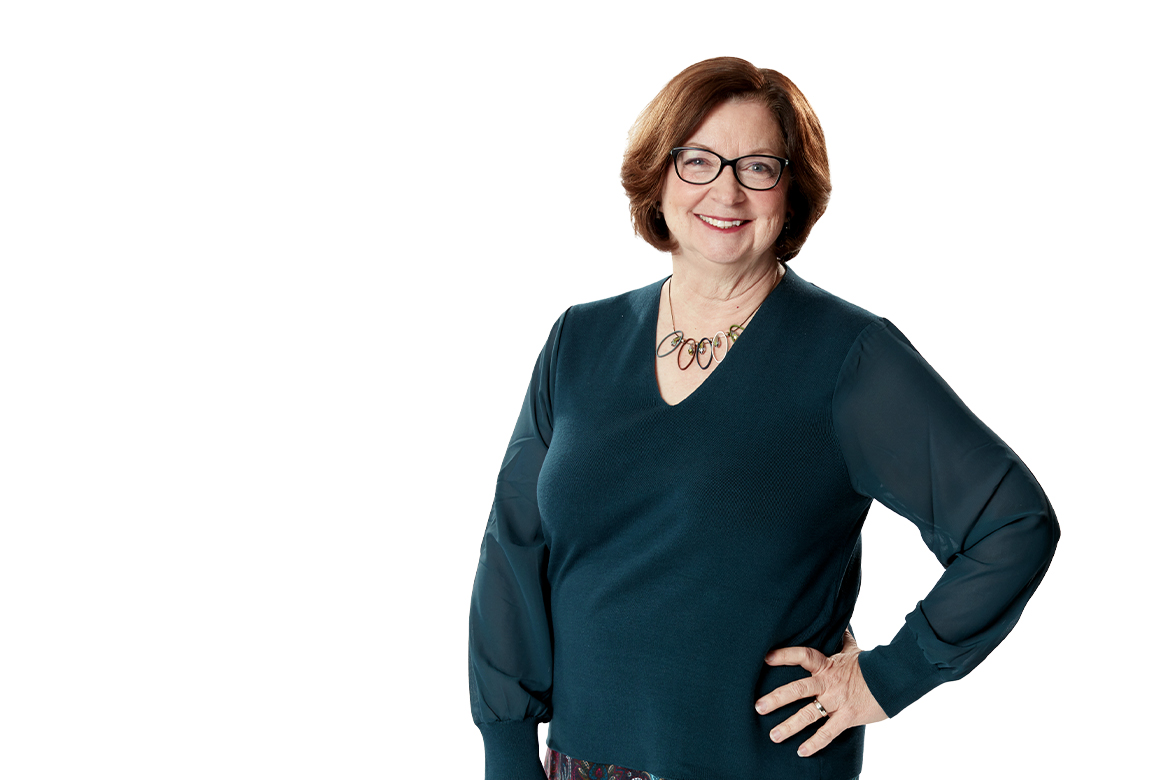Contents
If you were a student at any of the 93 U.S. medical schools in the fall of 1961, you might have heard murmurs of a curious study, published in the November issue of The New England Journal of Medicine, that looked at how many—or really how few—patients at the time ended up in academic medical centers. Out of 1,000 adult patients in a given month, the study found, 750 would experience some kind of illness and 250 would later consult for medical care, but only nine would end up in a hospital, and just one of those would be referred to a university medical center.
“So that one patient in a thousand,” says Susan E. Skochelak, MD, MPH, chief academic officer and group vice president of medical education at the AMA, “was where we were focusing clinical training for all of our physicians.”
The study, “The Ecology of Medical Care,” became a landmark piece of research. But since its data had been pulled from multiple sources, some several decades old, and given how the health system had changed in the decades after it was published—the specialty of family medicine, for example, didn’t exist in 1961—the study was done again in 2001, adding children to the population. This time, a few more patients reported symptoms and slightly fewer sought treatment. But even less than that one patient in a thousand ended up hospitalized in academic medical centers.
“And nearly 20 years on from that, we’re still training our physicians in tertiary care hospitals, by and large,” Dr. Skochelak said. “Even health systems have been saying, ‘We have to retrain these folks. We aren’t getting them ready for practice.' Imagine going to medical school for four years, then doing anywhere from three to eight years of a residency, and when you go into practice, you find out you’re not really trained to succeed in our health care system. That's a very sad thing for a trainee to hear.”
But change is, at last, coming to medical education.
All medicine is personal
Dr. Skochelak heads two national efforts for the AMA—the Accelerating Change in Medical Education initiative and the Reimagining Residency initiative—that together aim to remake both the curriculum and the culture of physician training.
The Accelerating Change in Medical Education initiative is one of the Association’s highest-profile strategies to improve the nation’s health. It was set in motion in 2013 with $11 million in grants to 11 medical colleges to pilot groundbreaking projects and share ideas to create the medical school of the future. It has since expanded to 37, representing more than one-fifth of the 162 U.S. allopathic and osteopathic medical schools in the U.S. today.
Reimagining Residency is its graduate counterpart, begun in 2019 with $15 million in grants over five years. The money is going to eight projects to help create a meaningful and safe transition from undergraduate medical education to residency, establish new curricular content and experiences to enhance readiness for practice, and promote well-being in training.
Both initiatives grew out of consensus among faculty and practicing physicians about the need for change across the training continuum. But together they are also the products of one physician’s personal vision.
“I came to medicine a couple years later than most,” Dr. Skochelak says. “My dad was a carpenter and my mom stayed home and took care of us. My family didn't have any experience in college, and I was kind of on my own in terms of exploring what I wanted to do with a career. They were supportive, but didn't really have any expectations.”
She was a natural born student but grew up in an era when careers for women seemed limited to teaching and nursing. Neither of those appealed to her.
“But in high school, I met a woman who ran a blood bank, and I thought, ‘Wow, this is pretty interesting. It's science-oriented,’” she said. “So I trained as a medical technologist, but when I started working in a hospital, the physician who directed the laboratory actually pulled me aside one day and asked me why I wasn't in medical school. That was the first time a career in medicine entered my mind.”
She went back to school to get the prerequisites and was soon accepted at the University of Michigan Medical School. Right off the bat, though, she realized something was amiss.
“I came home on Thanksgiving break, and my uncle Frank asked me, ‘Hey, Susan, could you look at this rash? And what about this symptom and what about that one?’” Dr. Skochelak remembered. “At the time, medical students didn't have anything to do with patients in their first two years, as they were only in class. I thought that was really strange, and it immediately made me appreciate how different medical education could be.”
Perhaps not so coincidentally, Dr. Skochelak did her family medicine residency at the University of North Carolina, where the authors of “The Ecology of Medical Care” had practiced more than 30 years earlier.
“What I didn’t recognize at the time was my residency program was doing things that most programs didn't do,” she says. “For example, they would videotape you seeing patients, and then you would sit down with a supervising faculty member and go over the consults—whether you were picking up on all the cues the patient was giving you, whether you were helping them meet the goals that they came into the visit for.
“They also had a community medicine orientation. You'd spend a whole month working in the community to understand which resources were out there and how they affected the health care of the patients we were seeing. That was formative for me in terms of understanding how to work holistically with patients.”
Later, she did an interdisciplinary Robert Wood Johnson Clinical Scholars fellowship that brought her together with physicians trained in pediatrics, obstetrics and gynecology, psychiatry and other specialties.
“It really got you out of your silos to say there's something bigger in physician training than just your residency and your specialty,” Dr. Skochelak says. “That was quite influential for me, and when I took my first job as a junior faculty member at the University of Wisconsin Medical School, I really wanted to bring that principle into medical education.”
Sure enough, in her more than 20 years at Wisconsin, where she became senior associate dean for academic affairs, Dr. Skochelak led the state’s Area Health Education Center program to bring health professions education into the community; headed a design team for the construction of an interdisciplinary education building where medicine, nursing and pharmacy students took classes together; helped create what became an integrated school of medicine and public health; and, yes, even developed a program that had students seeing patients beginning in their first week of medical school by pairing them with practicing physicians in the community.
“It's fairly common now, but in the ’90s, that was really pretty cutting edge,” she says.
It starts with students
Six years into the Accelerating Change in Medical Education initiative, meaningful curricular changes have already been implemented at schools across the country. University of North Dakota School of Medicine & Health Sciences has been piloting the use of robots to teach medical students telemedicine skills and better reach the state’s largely rural population. The University of Texas Rio Grande Valley School of Medicine has implemented a communication curriculum to train medical students to work in community-based settings along the U.S-Mexico border and head off numerous barriers to care, including physician shortages and limited infrastructure. The Warren Alpert Medical School at Brown University has revamped its curriculum to focus on population health, making it one of only a handful of departments of population health at an academic medical center in the U.S. There are more than 30 other examples.
In fact, it seems the medical education community was just waiting for a prime mover to come along.
“I wrote a review article in 2010 based on 15 major reports from all kinds of stakeholders, and everybody said the same things about how medical education needed to change,” Dr. Skochelak recalls. “The question we put to ourselves at the AMA was, ‘If everybody's been in agreement for the last 10 years that these factors in medical education need to change, why aren’t we changing?'”
That question was the catalyst for the Accelerating Change in Medical Education initiative, she says.
“Schools needed the opportunity and the developmental resources to make changes, along with some prestige to encourage them to lead.”
One of the projects that wasn’t envisioned at the 2013 launch of the initiative is a textbook, Health Systems Science, developed by the Accelerating Change in Medical Education consortium and published in 2016. It’s the first to focus on how health care is delivered, how health professionals work together to deliver that care, and how the health care system can improve patient care and delivery.
Along with basic science and clinical science, health systems science is now widely recognized as the crucial "third pillar" of medical science, emphasizing forces such as human factors, systems engineering and leadership. Dr. Skochelak is the editor, and the chapters were written by faculty from AMA consortium’s member schools.
“Our goal was to get these important orphan topics—like patient safety, social determinants of health and health care financing—adopted into curricula,” she says. “We thought, ‘If we could just put all this together in a textbook, then schools trying to teach this would have a road map.’ Previously, if you thought you needed to add seven new things to your curriculum, it would be pretty hard for a curriculum committee to get enthused about making so many changes. But we realized these topics all tracked together into understanding and improving the health care system. Having a single large focus made it easier for schools to realize, ‘Oh, we’re already teaching some of that. Now we can add the rest.’”
But the textbook could easily fall flat, Dr. Skochelak noted, if its subject matter didn't make it into licensing exams, such as the all-important United States Medical Licensure Examination Steps 1 and 2. Students would think they didn't have to learn it. But as another mark of the book’s success, health systems science is now, in fact, being tested for.
The AMA, in collaboration with the National Board of Medical Examiners (NBME), recently launched a Health Systems Science Examination. The 100-question test aims to assess medical student readiness for residency in health systems science and is free for all medical schools through June 30, 2020.
The AMA textbook also has been adopted by dozens of medical schools. A second edition will be out in 2020, with several important additions, including chapters on legal and ethical issues, private practice and, of course, systems.
“We received comprehensive feedback from our publisher on what our users found useful and how to improve the book. Some asked, for example, 'Well, you're talking about health systems science, so where's the chapter on applying the system science of health systems science?” Dr. Skochelak said.
In addition, the AMA has formed a Health Systems Science Academy to address two key impediments to systemic adoption of the curriculum.
“One is that the physicians of my generation, and even more recent trainees, aren’t exposed to this material,” Dr. Skochelak said. “And if you don't even know the language, you’re in real trouble. The schools recognize that they need more faculty development, so we have a program to train the trainers.
“The second is how to disseminate health system science education, not just to the schools in our consortium, but to any school that wants to adopt and teach it. Where are the resources? So we designed the academy to be a community. It’s not just a one-shot workshop. Faculty at the med schools all have mentors available as consultants to help them implement projects over the course of a year.”
Change 2.0
Of course, medical school is just the start of a physician’s training. And to make lasting changes to medical education, Dr. Skochelak and others at the AMA knew they would have to tackle residency too.
“Our fear was that we will have trained these students and they will enter residency with these new skills and attitudes and then hit the wall of an old system that hasn't really accepted those changes,” Dr. Skochelak says. “It’s pretty disheartening if you feel like, ‘Well, I'm prepared to be a systems practitioner and someone who takes all of these new skills to heart, yet the residency programs haven’t changed.’”
The AMA Reimagining Residency initiative is intended to close the gap between undergraduate and graduate medical education.
“There are very few places, ironically, in American medical education where these two groups of faculty actually come together and talk to each other,” Dr. Skochelak says. “They tend to meet separately, and they don't always even trust each other, even though technically they're on the same faculty of medicine. So instead of having meetings with the residency group alone, we've designed our meetings to bring the medical school and residency faculty into the same meetings, so that we work across the continuum.”
But whereas the Accelerating Change in Medical Education initiative had clearly defined areas of focus mapped out from the start, Reimagining Residency is more exploratory in adopting changes.
“There hasn't been the same literature base for residency education reform, such as the 15 studies on medical student education I mentioned earlier, so there isn't as strong of a consensus about what needs to change in residency,” Dr. Skochelak says. “Do people think it needs to change? Absolutely, and anyone you talk to at the medical school or residency level will have ideas about it.”
Still, there is one feature of residency that can serve as a starting point.
"There's this cliff between medical school and residency—we don't give a handoff,” Dr. Skochelak says. “You're transitioning into the next level of your career and, as faculty, we understand a great deal about your strengths and areas of needed improvement. But then we pretend you're a blank slate and don’t pass this information on to the residency program faculty. If you're an adaptive learner like we encouraged you to be in medical school, wouldn't we want you to take your portfolio with you and say, 'Here's what I need to keep working on,' and have the residency embrace that?”
Reimagining Residency is much like the AMA undergraduate medical education initiative, however, in the diversity of its projects. For example, New York University School of Medicine is focusing on individualized pathways and a structured hand-off between UME and GME with faculty coaches involved in the transition. Partners HealthCare System, Massachusetts General Hospital, and Brigham and Women's Hospital are integrating time-variable models for advancement in training. Vanderbilt University Medical Center and University of Mississippi Medical Center are training residents in different physician personae to support their career development.
“This first year is mostly a planning year,” Dr. Skochelak says. “It’s going to take about three years before we start to get some results that people feel they can share.” That follows a path similar to that seen with the Accelerating Change in Medical Education initiative, she adds. “It was in years three, four and five when we were able to understand the lessons learned.”
For the next generation
While Dr. Skochelak now works with colleges, associations and accreditors to change medical education, her commitment to the cause remains deeply personal. Though deeply gratified that her daughter Elizabeth saw enough value in work as a physician to pursue medicine as a career, Dr. Skochelak says the experience has been somewhat bittersweet.
One day she found herself in tears, she says, to realize that Elizabeth was encountering some of the old ineffective, traditional approaches to medical education in her own undergraduate medical career.
“I had worked really hard already on trying to make big changes in medical education, and I saw from what she went through at her medical school how little things had changed in the 20 years of work that I’d put in. And it broke my heart.
“That’s part of what fuels me still—to see these young, idealistic, dedicated students who are really driven to care for people,” Dr. Skochelak adds. “We can be the bridge to what they are trying to achieve, which is that quadruple aim of better outcomes, lower costs, improved patient satisfaction and happier doctors. That's my big hope.”




